Power out in one room in house. How to fix and causes - Electrical Faults Fixed
1) Restoring Power to a Single Room: A Homeowner's Troubleshooting Guide
A partial power outage affecting a single room of your home is actually one of the most common electrical problems homeowners face. The good thing is that many electrical issues can be resolved safely by following some basic troubleshooting steps. However, you need to understand when to attempt fixes yourself and when to call a professional electrician for safety. Electrical systems are complex and dangerous and the reasons for electrical failure can often lead to assumptions and dangers.
As a professional electrician and electrical lecturer, I have seen many electrical system problems where one room has lost power and there can be many causes for this. Let’s have a look at these in this article.
Back to top2) Understanding the Most Common Reasons for Power Loss
Before attempting to restore power to a room of your house, it's important to understand the possible causes of a partial outage. The first thing you should know is that power loss in a specific room usually stems from one of several common causes:
Tripped Circuit Breaker or Blown Fuse
A tripped circuit breaker is often the root cause of power loss in part of your home. This safety device is designed to cut off current flow when it detects an overloaded circuit or short circuit.
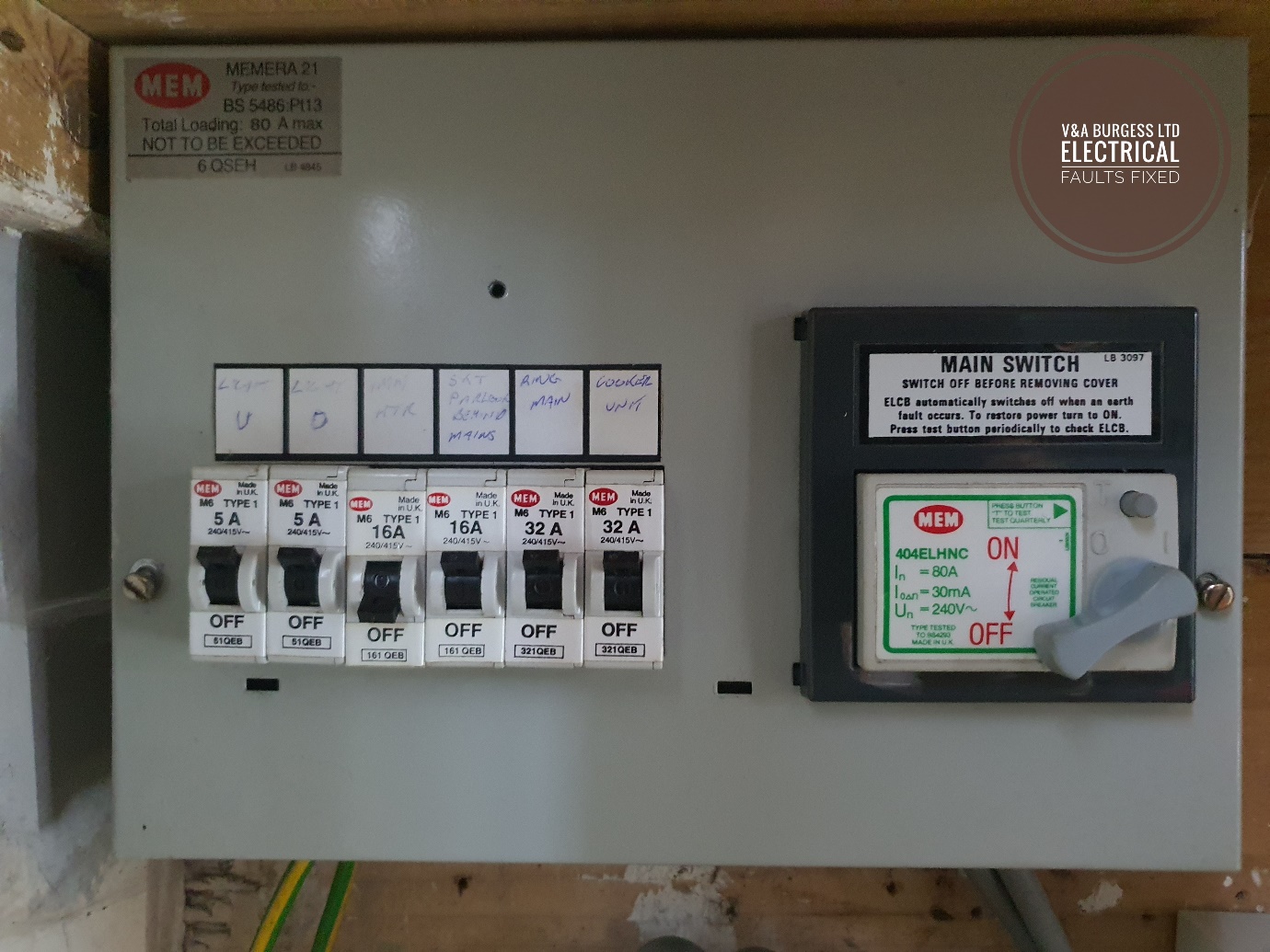
(PHOTO: Tripped Circuit Breaker)
In older homes with fuse boxes instead of a circuit breaker panel, a blown fuse serves the same protective function. In Europe and the UK it is common for an RCD, RCB, RCCB to trip and cause power loss to one part of the house or one room. The RCD devices in Europe are very similar to the GFCI devices used in the USA and Canada.
GFCI Outlet Issues
A tripped GFCI outlet (Ground Fault Circuit Interrupter) is another frequent cause of electrical problems in a single room. These specialized outlets, often found in bathrooms and kitchens, can shut off power to multiple outlets when they detect potential hazards like electrical shocks.
Wiring Problems
Faulty wiring, loose wire connections, or a bad connection can lead to partial power outage issues. These underlying issues are particularly common in older homes where electrical wiring may have deteriorated over time.
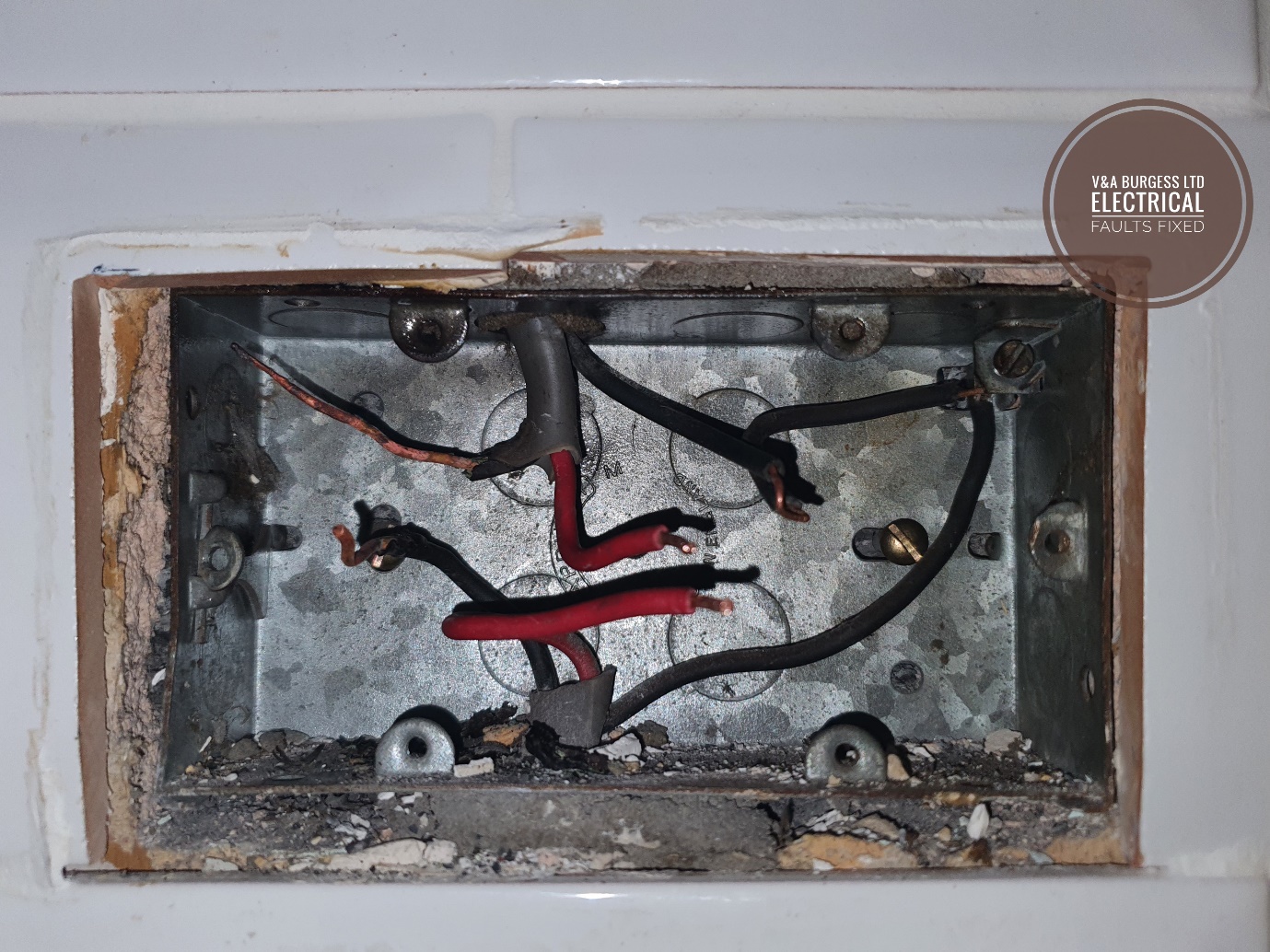
(PHOTO: Bad Electrical Wiring)
Back to top3) Step-by-Step Troubleshooting Process
Step 1: Initial Assessment
The first thing to check when you lose power in part of the house is whether the problem affects your whole home or just a specific outlet or room. If it's a complete power outage, contact your power company, as the problem likely lies outside your home's electrical system. A complete power outage could also be caused by the Main Switch or burning out failing, but an electrician will need to check this for you.
Step 2: Check Your Circuit Breaker Box
If only part of your home is affected, examine your circuit breaker panel. Look for any breaker switch that's in the off position or middle position. A tripped breaker is a good sign that circuit overload has occurred. Common causes include:
- Too many electrical devices running simultaneously
- A defective appliance drawing much power
- A space heater or other high-demand electronic device
- Loose connections in your electrical circuits
- Water leaking into the panel or electrical equipment on circuits
If there is a smell of burning then DO NOT carry out the next step, instead, contact a professional electrician to come and check the panel or fuse box for you.
Step 3: Reset the Circuit Breaker
To reset a tripped breaker:
- Locate the breaker that's in the off position
- Push it fully to the off position
- Then firmly push it back to the on position
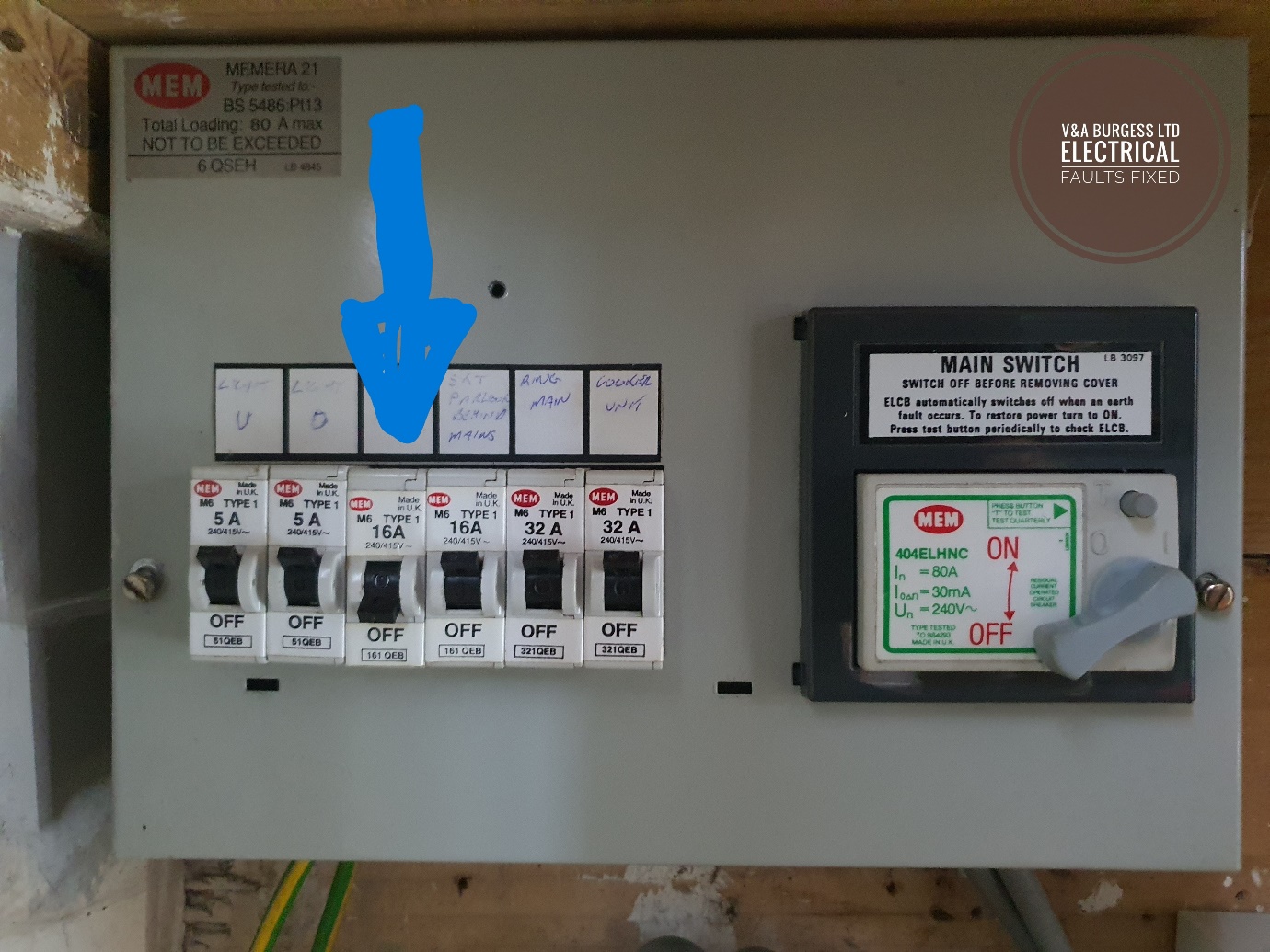
(PHOTO: Identifying a Tripped Circuit Breaker)
If the breaker trips immediately, this indicates a more serious electrical issue such as cable damage, or arcing that requires professional attention. Continually resetting a breaker without professional investigation will nearly always make the problem worse and cost more to fix.
Step 4: Inspect GFCI Receptacles
If the circuit breaker isn't the issue, check for a tripped GFCI outlet. Look for GFCI receptacles in the affected room and nearby areas. Press the reset button on each GFCI outlet you find. Sometimes a tripped GFCI outlet in one room can affect electrical devices in a different room.
Step 5: Investigate Potential Causes
If power is restored after resetting a breaker or GFCI, investigate what caused the problem:
- Unplug electrical appliances in the affected area
- Check for faulty outlets or signs of visible damage
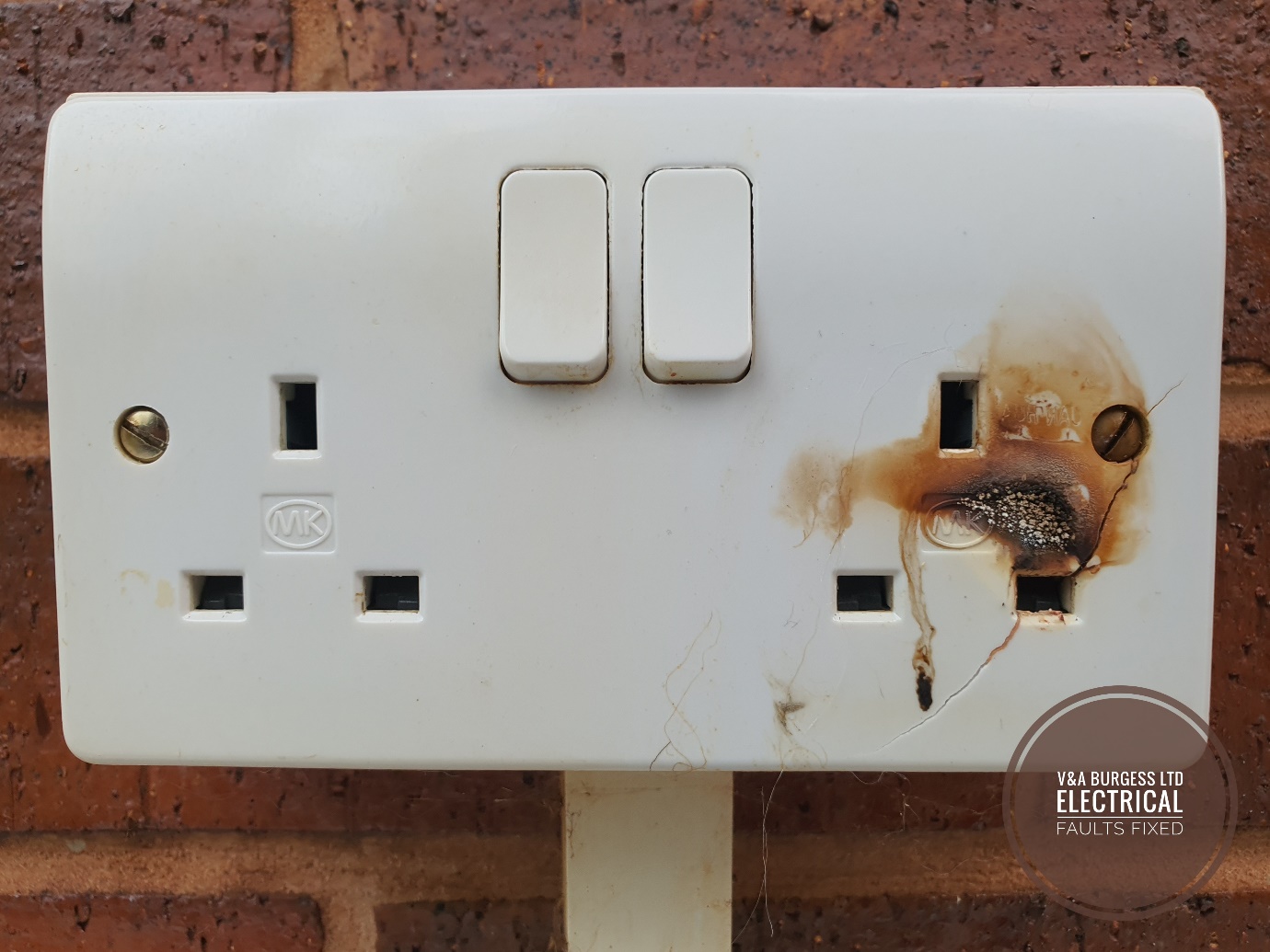
- Look for damaged light fixtures or light bulbs
- Test each electronic device individually
If the cause is not obvious but the problems persist, try to remember which outlets and appliances were in use at the time the device tripped. This will help you diagnose the possible socket outlet or appliance that may be causing the issue.
Back to top4) When to Call a Professional
While some electrical work can be handled by homeowners, certain situations require a certified electrician. Contact a licensed electrician or local electrician if:
- The breaker trips repeatedly
- You notice burning smells or experience electric shocks
- There are signs of faulty wiring or loose wires
- Your home's electrical system is outdated
- You need an electrical panel upgrade
- The problem persists after basic troubleshooting
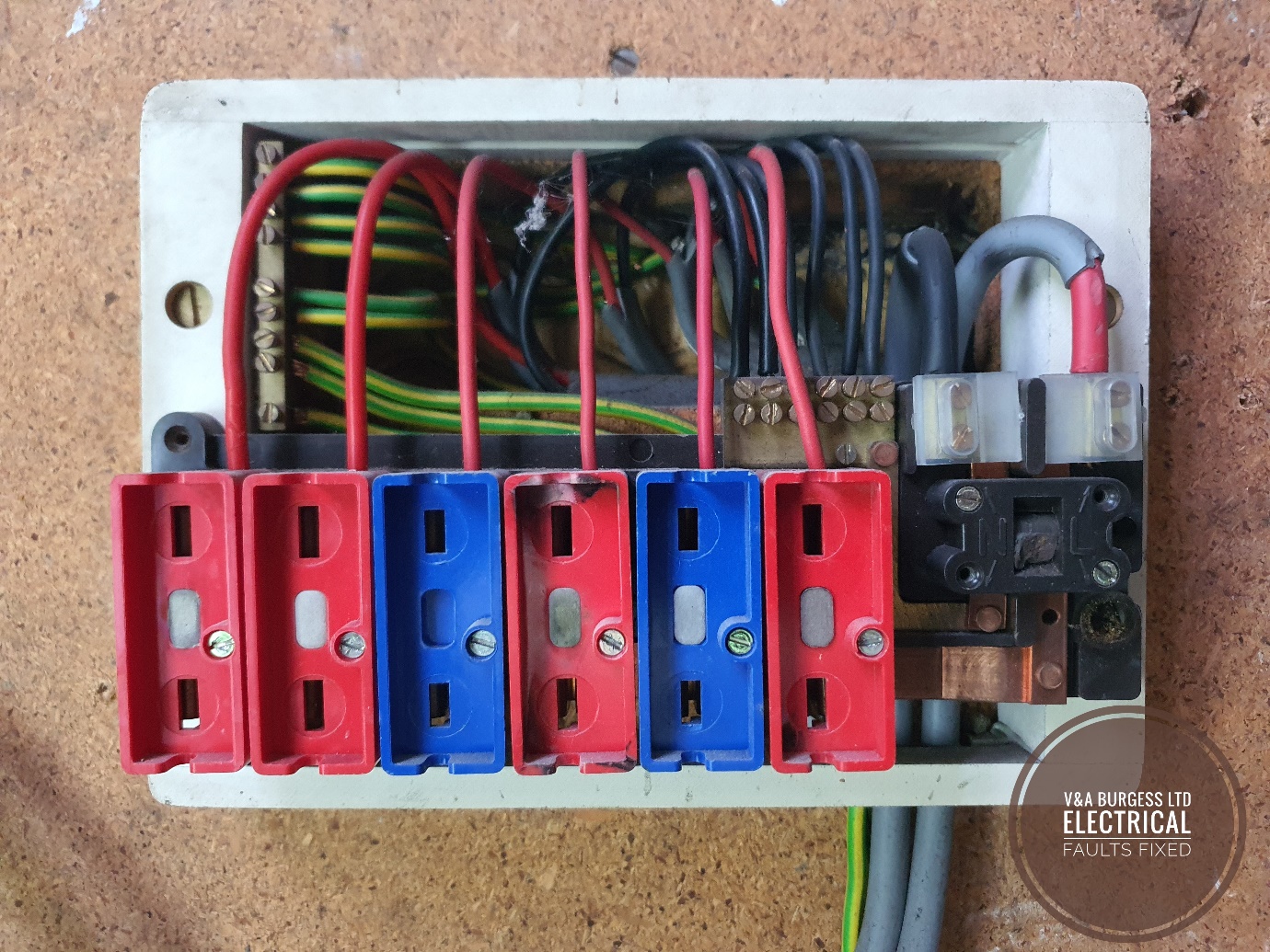
(PHOTO: An old Electrical Panel / Fuse Box)
A qualified electrician can identify the root cause and make necessary repairs before further damage occurs. This is particularly important in older homes where electrical problems may indicate more serious issues with the electrical wiring.
Back to top5) Prevention Tips
Prevention is better than cure and many electrical issues can be avoided in the first place. The trouble is, we tend to ignore our electrical system until it begins to give us problems! To avoid future electrical issues and partial power outage problems:
- Don't overload electrical circuits with too many devices
- Regularly inspect light switches and outlets for signs of damage
- Consider having a professional electrician perform periodic inspections
- Be mindful of how much power high-demand appliances use
- Address any signs of electrical problems promptly
Not maintaining an electrical system is similar to not changing the oil or servicing your vehicle. Whilst everything may seem to run very well regardless, there will be damage occurring underneath the surface that could have been prevented with some maintenance.
Back to top6) Safety Considerations
When dealing with your home's electrical system, safety should always be your primary concern. Power surges and electrical shocks pose serious potential hazards. If you're unsure about any aspect of troubleshooting or repairs, it's always better to contact a professional electrician rather than risk injury or further damage to your electrical circuits.
Remember that while a partial outage might seem like a minor inconvenience, it could indicate more serious underlying issues with your electrical wiring. Taking quick action to identify and resolve the problem can help prevent more extensive electrical problems in the future. If nothing else calling an electrician to explain the problems may get you some peace of mind and sensible answers.
By following these guidelines and knowing when to call for professional help, you can safely address power loss issues in your home while ensuring the safety of your family and property.
Back to top
Read more articles
- Log in to post comments


